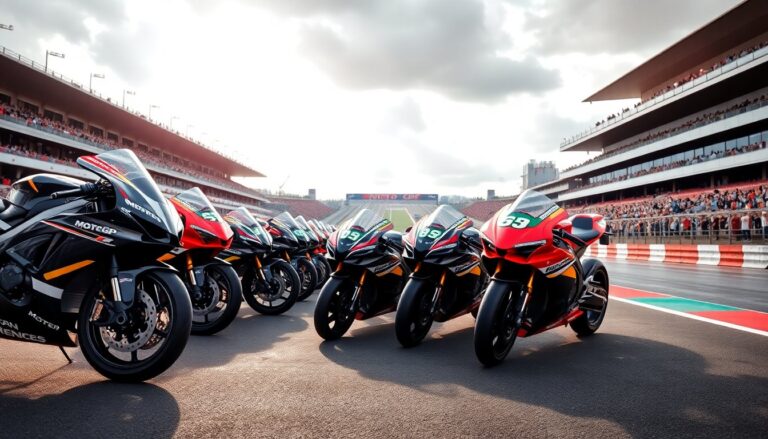Argomenti trattati
Exploring the world of MotoGP racing
The world of MotoGP racing captivates millions of fans around the globe. This thrilling spectacle is renowned for high speeds, intense rivalries, and advanced technology. MotoGP stands as the pinnacle of motorcycle racing, where athletic prowess meets engineering excellence. This unique domain within the motorsport landscape has a rich history and continues to evolve. In this article, we will delve into the historical context, technological advancements, and the current state of MotoGP racing.
History of MotoGP
The origins of MotoGP date back to the early 20th century, when the first motorcycle races emerged. However, it was not until 1949 that the official Fédération Internationale de Motocyclisme (FIM) established the Grand Prix motorcycle racing series. Initially, races featured various classes based on engine size, but the 500cc class quickly gained prominence, leading to the creation of the MotoGP title in 2002.
The evolution of the sport
Throughout the decades, MotoGP has undergone significant changes in both regulations and technology. The early 2000s saw the introduction of four-stroke engines, marking a pivotal shift from the traditional two-stroke engines that had previously dominated the sport. This transition enabled enhanced performance and reduced emissions, reflecting the increasing focus on sustainability in motorsport.
The competition in MotoGP has intensified, with teams making substantial investments in research and development to gain a competitive advantage. The emergence of legendary riders like Valentino Rossi and Marc Márquez has further enhanced the sport’s appeal, as these athletes continually push the boundaries of speed and performance on two wheels.
Technological advancements in MotoGP
MotoGP is distinguished by its relentless pursuit of technological innovation. Manufacturers such as Yamaha, Honda, and Ducati are at the forefront of motorcycle design and engineering. The incorporation of advanced materials, including carbon fiber and aluminum alloys, is now standard in the construction of MotoGP bikes, leading to lighter and more agile machines.
Electronic systems and aerodynamics
Modern MotoGP bikes are equipped with advanced electronic systems designed to enhance performance on the track. Notable features include traction control, anti-lock braking systems, and quick-shifters, enabling riders to shift gears seamlessly without closing the throttle. The aerodynamic design of these motorcycles has also significantly improved, as engineers strive to minimize drag and maximize downforce, resulting in greater stability at high speeds.
The continuous advancement of data analytics and telemetry has revolutionized race strategies. By examining real-time data, teams can make strategic decisions about tire selection, suspension adjustments, and fuel management, all of which play a crucial role in determining race outcomes.
The current state of MotoGP
The MotoGP calendar features a diverse range of circuits across multiple continents, including the iconic Mugello Circuit in Italy and the modern Circuit of the Americas in the United States. Each track presents unique challenges that test riders’ skills and strategies. The season usually comprises 20 races, culminating in a dramatic showdown for the World Championship.
In recent years, MotoGP has experienced a surge in popularity, particularly among younger audiences. This growth is largely due to the rise of social media and streaming platforms, which have made races more accessible than ever before. The engaging personalities of riders, coupled with the thrilling nature of the races, contribute to a vibrant and enthusiastic MotoGP community.
Challenges ahead
Despite its success, MotoGP encounters significant challenges. The urgent need for sustainability is crucial as the sport aims to minimize its environmental impact. Manufacturers are increasingly investing in electric motorcycle technology, with plans to introduce electric racing series alongside traditional competitions. Furthermore, the sport must adapt to changing demographics and interests, ensuring it remains relevant and engaging for future generations.
MotoGP represents more than just a motorcycle racing series; it embodies a celebration of engineering, athleticism, and passion. As the sport continues to evolve, it is well-positioned to retain its status as one of the most exhilarating and captivating forms of motorsport globally.

